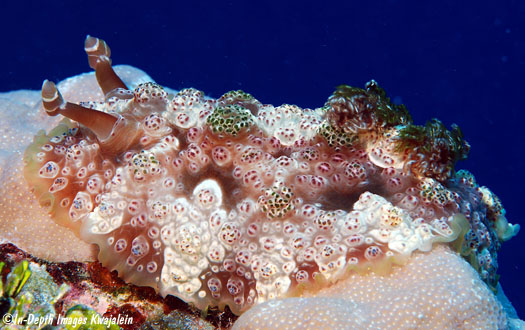
For a long time we followed the general convention and included these animals in with Dendrodoris tuberculosa. Both species or forms can be found in lagoon Halimeda patches, the same area that we had seen many D. tuberculosa. However, those on this page share a few characteristics that differ somewhat from the standard D. tuberculosa. Foremost among these is the almost caulflower-like nature of the dorsal tubercles, the larger ones with their bumpy tops like clusters of small balls rising from a narrower base. Specimens with this kind of dorsal compound tubercles also have them spotted with red and green, both colors on the same individual. The margins also seem a bit thinner and more undulating than our standard D. tuberculosa. The underside bears spots similar to D. tuberculosa, but in the few specimens we have looked at, the spots seem more sparse. Specimens so far vary from red to green. Perhaps the most telling coincidence, if it is one, is we have seen several of the standard Dendrodoris tuberculosa paired up, all with their own kind. The only time we have seen these red or green speckled variety paired up, they were also with their own kind. Not much of a sample size, of course, so we cannot be sure, but it does seem as though the nudibranchs are probably better at choosing a mate of their own kind than we are at telling the difference between them. The first was observed on 25 May 2008 in a lagoon Halimeda patch at about 8m depth. This animal is shown in the first few photos.

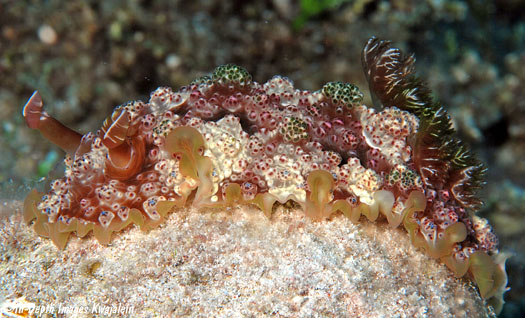
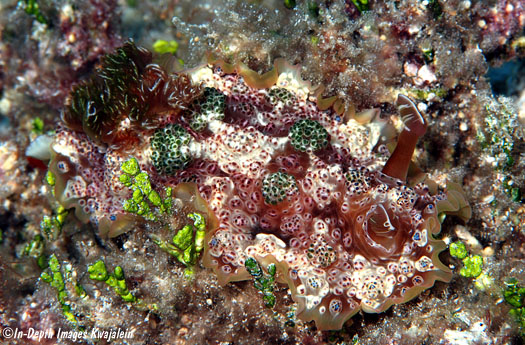
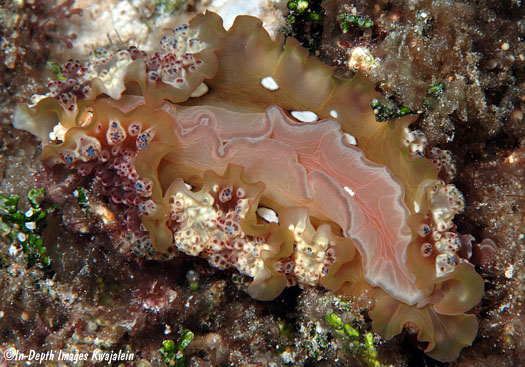
A closeup shows how the larger dorsal pustules form cauliflower-like clump, quite distinct from typical D. tuberculosa.
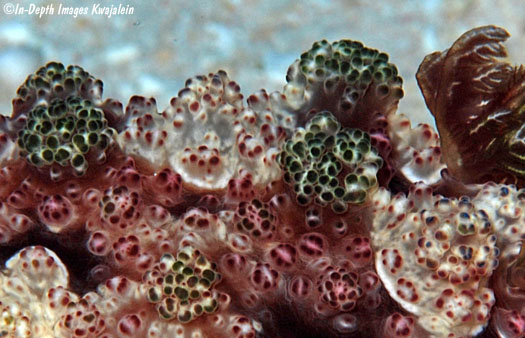
Just a couple of weeks later, we found two more individuals, one green and one red, paired up in the same Halimeda patch. The red one this time had a regenerating rhinophore.
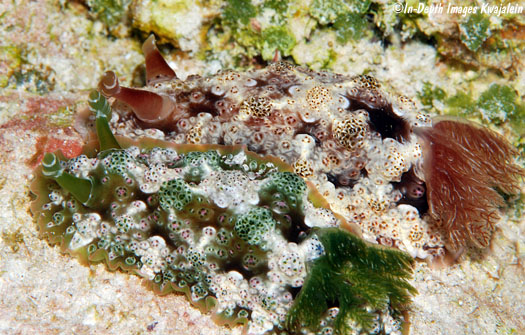
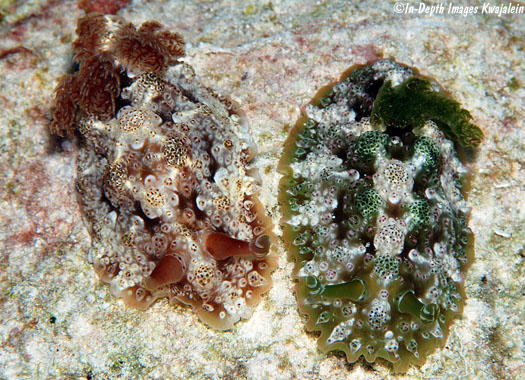
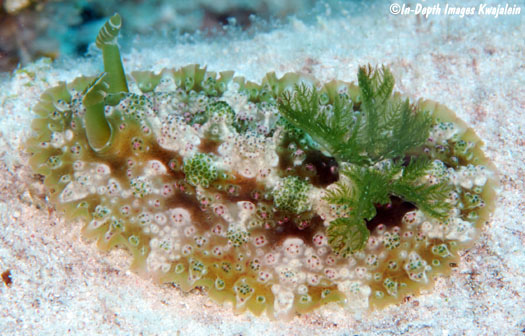
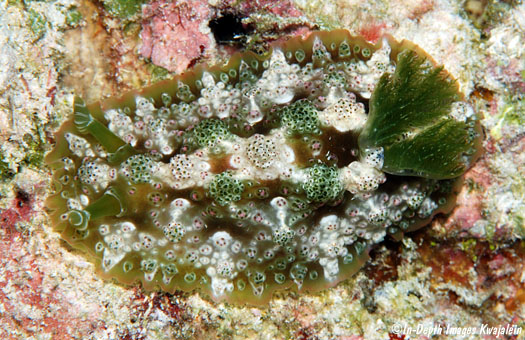
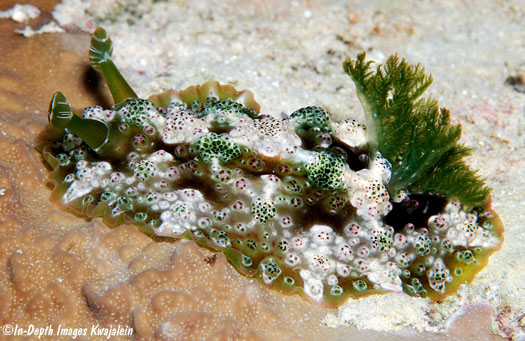
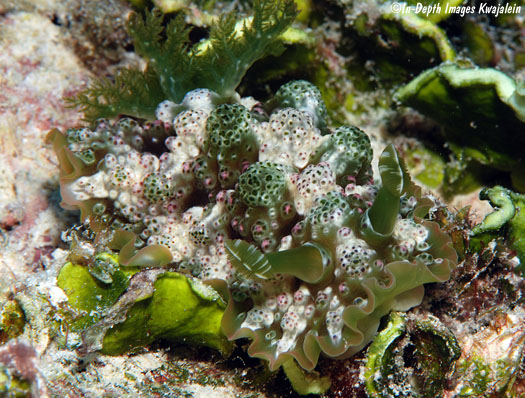
One more specimen was found crawling on sand in a Kwajalein lagoon Halimeda patch on 6 May 2012.
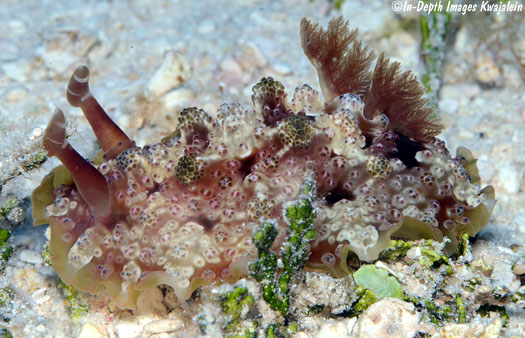
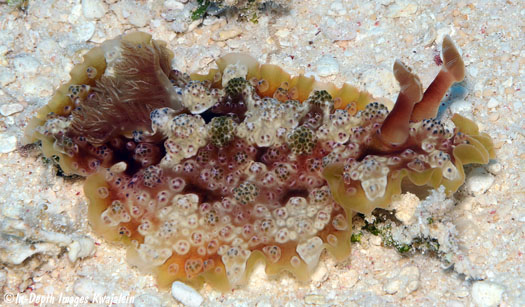
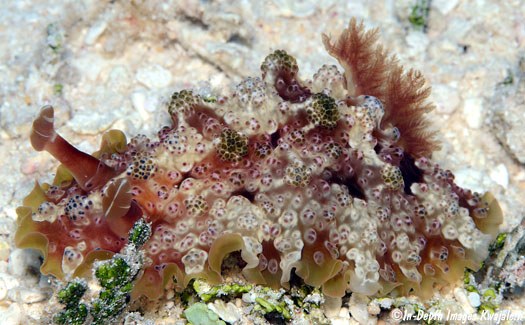
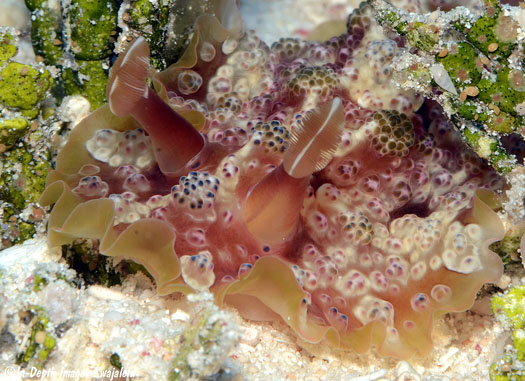
Our thanks to Cory Pittman for the suggestion that these might not belong with D. tuberculosa.
Created 11 January 2012
Updated 16 January 2020